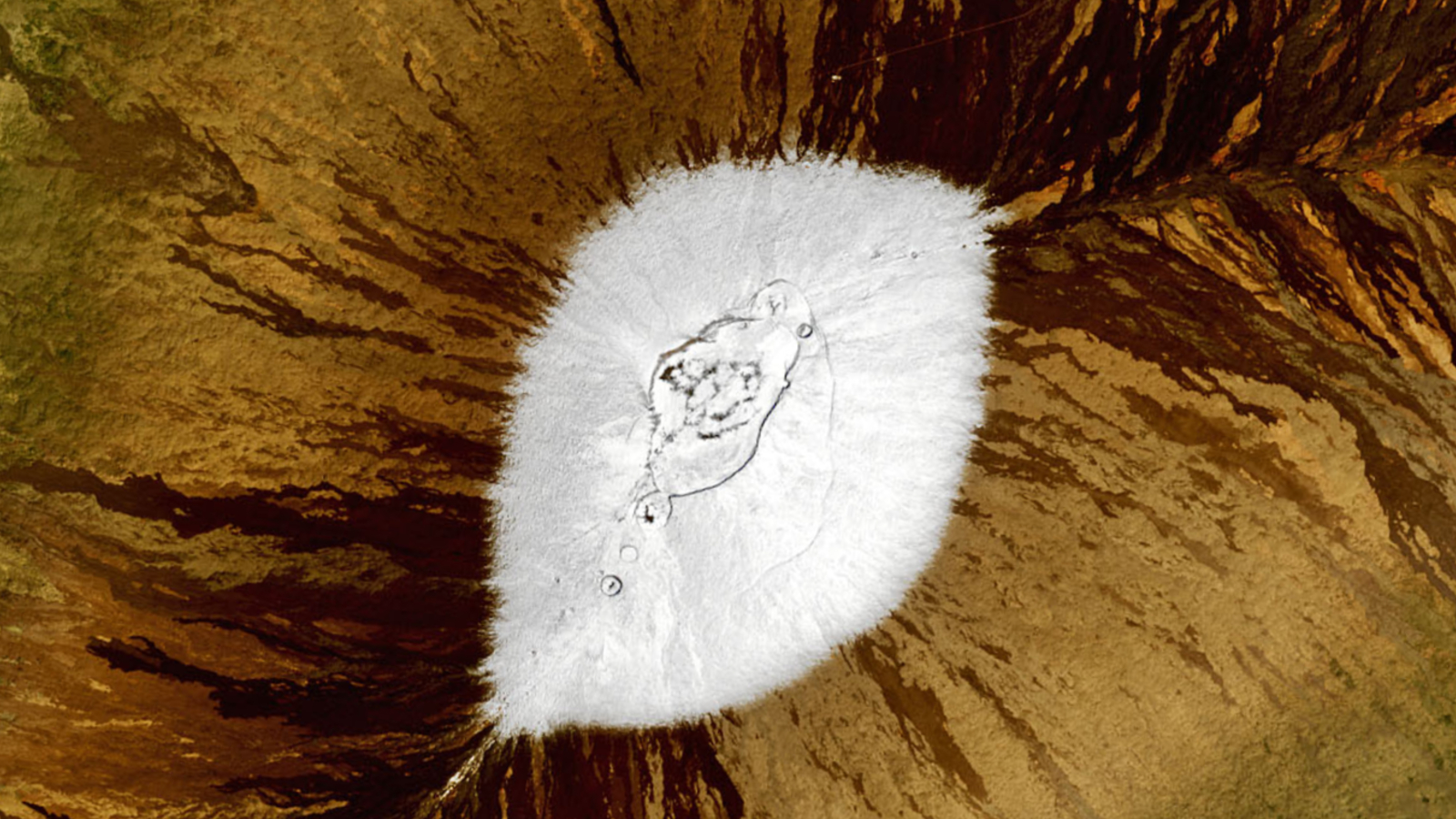Heavy dusting of 'pineapple powder' paints Hawaii's volcanoes white after near-record snowfall - Earth from space

The summit of Mauna Loa was covered in a thick dusting of snow, or "pineapple powder," after a heavy snowstorm in February 2021. QUICK FACTS Where is it? Big Island, Hawaii [19.6103680, -155.4898339] What's in the photo? Snow covering the summit of Mauna Loa Which satellite took the photo? Landsat 8 When was it taken? Feb. 6, 2021 Striking satellite photos snapped in 2021 show the volcanic peaks of Hawaii's Big Island covered with a thick dusting of snow , also known by locals as "pineapple powder," following one of the island's most extreme snowfalls in recent history. The first image (see above) shows the most extensive snow coverage on Mauna Loa, a 13,681-foot-tall (4,170 meters) volcano near the center of the Big Island. The second image (below) shows a slightly smaller white patch on Mauna Kea, a 13,796-foot-tall (4,205 m) peak located around 25 miles (40 kilometers) further north. Both images were taken on the same day. Mauna Loa is still active and most recently erupted between November and December 2022, according to the Global Volcanism Program . Mauna Kea, meanwhile, is dormant and has not erupted for at least 4,600 years. Hawaiian snow is more common than most people realize, and both Mauna Loa and Mauna Kea often receive at least a light dusting every year. However, 2021 was an extreme case. When the photo was taken, the combined snow covering both peaks reached the second-highest amount for this time of the year since records began in 2001, according to NASA's Earth Observatory . At the peak of the preceding snowstorm, up to 2 feet (0.6 m) fell at the summit of both volcanoes in a single day. Related: See all the best images of Earth from space Mauna Kea received less snow coverage than Mauna Loa. However, combined, the white patches reached near-record levels. (Image credit: NASA/Landsat) Local reports revealed that several islanders traded in their surfboards for snowboards and skis, and braved the trip up Mauna Kea to partake in some rare snow sports as soon as the roads were cleared. Sign up for the Live Science daily newsletter now Get the world’s most fascinating discoveries delivered straight to your inbox. Contact me with news and offers from other Future brands Receive email from us on behalf of our trusted partners or sponsors Pineapple powder Hawaiian snow is often linked to a weather phenomenon referred to as Kona low, according to the Earth Observatory. This is where winds shift from the typical northeast direction and start blowing from the southwest, or "Kona" side, drawing moisture from the tropical Pacific, which turns into rain and snow as it rises up the mountains' slopes. Snow is most likely to occur between October and April, and both Mauna Loa and Mauna Kea experience an average of 20 days of snow cover every year, according to the Lyman Museum , based in the Big Island town of Hilo. On rare occasions, snow has also fallen on the volcanoes as late as June, according to The Weather Channel . However, the pineapple powder may not be as common in the future. This 2008 photo shows snow covering the summit caldera of Mauna Loa with the similarly snow-topped summit of Mauna Kea in the background. Tracks from skiers and snowboarders can be seen in the image. (Image credit: Getty Images) Recent research revealed that human-caused climate change will likely make snow much less likely in Hawaii as rising sea surface temperatures make Kona low less likely to occur, according to the University of Hawai'i at Manoa (UHM) . "Unfortunately, the projections suggest that future average winter snowfall will be 10 times less than present day amounts, virtually erasing all snow cover," Chunxi Zhang , an atmospheric modeling specialist at the International Pacific Research Center in Hawaii, said in a UHM statement.


















